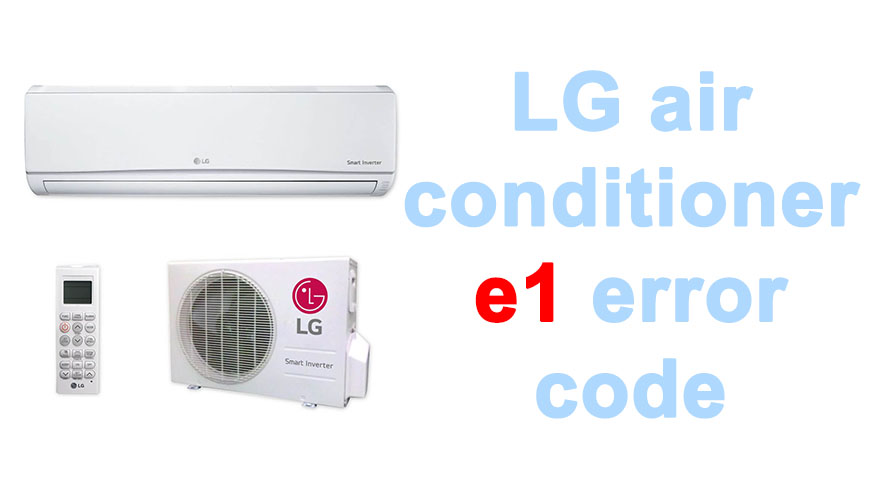The world of technological advancement is a labyrinth of innovations, but at the same time, it can be a minefield of error codes and system glitches. Take, for instance, the LG air conditioner. A spectacular piece of machinery, no doubt, but when it displays the E1 error code, homeowners and technicians alike can be thrown into a quandary. This article aims to demystify the LG air conditioner E1 error code, outlining its potential causes, implications, and resolution methods.
Understanding the E1 Error Code
The E1 error code is a common fault indicator in various LG air conditioner models. It’s akin to the unit’s SOS signal, intimating that something is amiss and needs immediate attention. When your LG air conditioner flashes the E1 error code, it’s telling you that there’s a problem in the operation, which is often linked to specific components of the unit.
Common Causes of the E1 Error Code
Now that we’ve established what the E1 error code signifies, it’s equally important to comprehend its typical triggers. Primarily, this error code can be attributed to four common issues:
- Faulty Control Board: The control board is the brain of your LG air conditioner. It dictates the unit’s functioning by regulating its various operations. A defect in the control board can lead to the E1 error code.
- Thermistor Issues: A thermistor is a type of resistor whose resistance changes significantly with temperature. It helps the air conditioner gauge and maintain the desired room temperature. If the thermistor isn’t functioning correctly, it can trigger the E1 error code.
- Poor Wiring Connections: If the wiring connections between the control board and the thermistor are loose or faulty, the system can display the E1 error code.
- External Factors: External factors like power surges or fluctuations can also cause the E1 error code. A sudden jolt of electricity can overwhelm the unit, causing it to malfunction and display this error code.
Troubleshooting the E1 Error Code
Having identified the probable causes, we now turn to the problem-solving aspect. Remember, troubleshooting should ideally be conducted by trained professionals to avoid exacerbating the situation. However, as an end-user, understanding these steps helps you communicate more effectively with your technician.
- Control Board: If the control board is defective, it usually needs to be replaced, as repairing it can be complex and uneconomical.
- Thermistor: A malfunctioning thermistor can often be replaced to restore normal operation. However, it’s vital to ensure that the replacement is compatible with your specific LG model.
- Wiring Connections: If the error is due to poor wiring, a professional can inspect and repair the connections.
- External Factors: If the issue stems from external factors, a thorough check-up is necessary to identify any damaged components. Power fluctuations, for instance, may have damaged other parts besides causing the E1 error code.
Preventive Measures for the E1 Error Code
As the saying goes, “prevention is better than cure.” To help prevent the E1 error code from occurring, consider the following measures:
- Regular Servicing: Regular servicing can help detect potential issues before they become major problems. It’s advisable to service your LG air conditioner at least once a year.
- Proper Installation: Make sure your air conditioner is installed by a professional. Proper installation can prevent a lot of problems, including loose or incorrect wiring.
- Use a Voltage Stabilizer: To guard against power surges or fluctuations, consider using a voltage stabilizer. This can protect your
